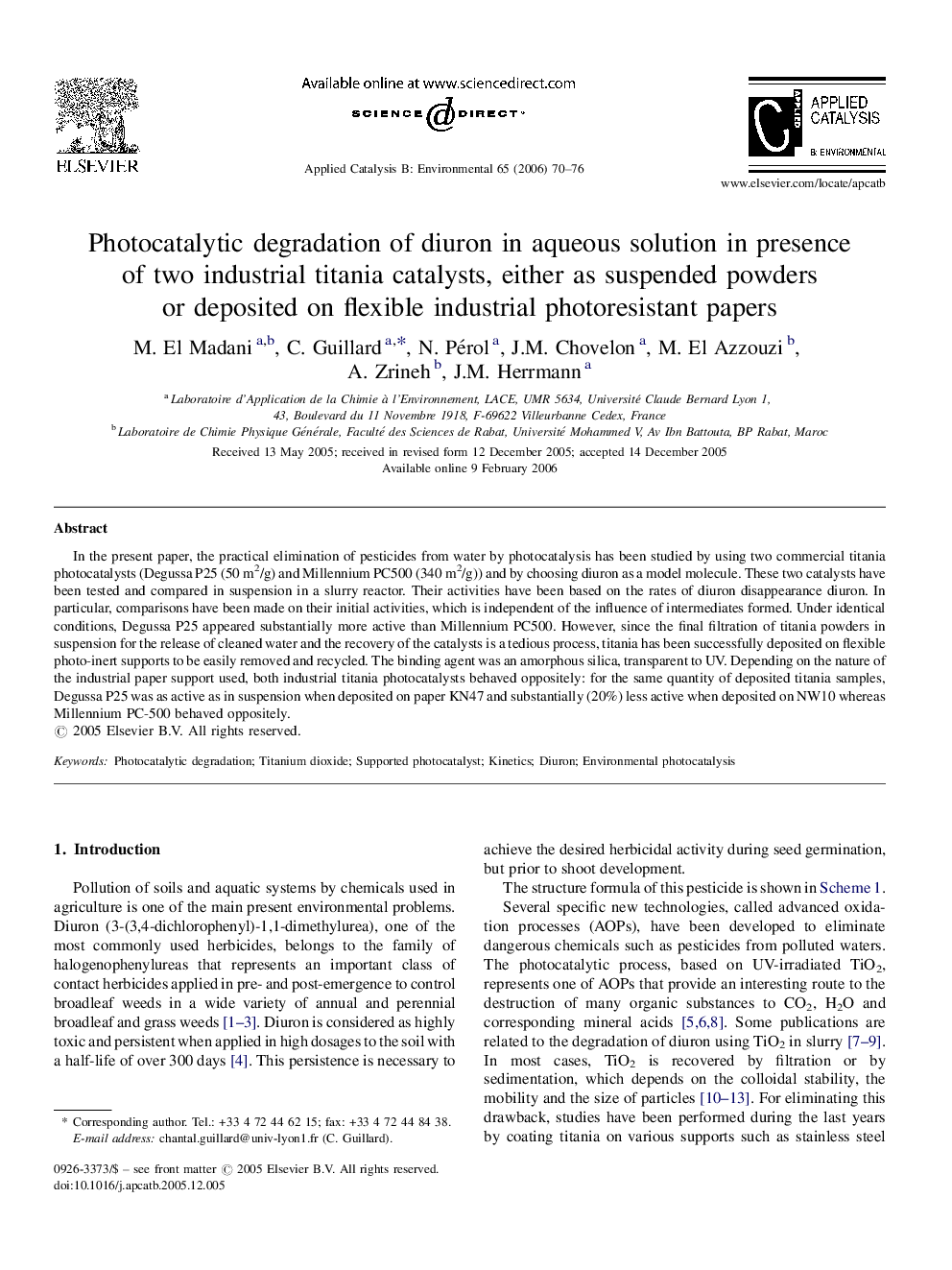| کد مقاله | کد نشریه | سال انتشار | مقاله انگلیسی | نسخه تمام متن |
|---|---|---|---|---|
| 49191 | 46564 | 2006 | 7 صفحه PDF | دانلود رایگان |

In the present paper, the practical elimination of pesticides from water by photocatalysis has been studied by using two commercial titania photocatalysts (Degussa P25 (50 m2/g) and Millennium PC500 (340 m2/g)) and by choosing diuron as a model molecule. These two catalysts have been tested and compared in suspension in a slurry reactor. Their activities have been based on the rates of diuron disappearance diuron. In particular, comparisons have been made on their initial activities, which is independent of the influence of intermediates formed. Under identical conditions, Degussa P25 appeared substantially more active than Millennium PC500. However, since the final filtration of titania powders in suspension for the release of cleaned water and the recovery of the catalysts is a tedious process, titania has been successfully deposited on flexible photo-inert supports to be easily removed and recycled. The binding agent was an amorphous silica, transparent to UV. Depending on the nature of the industrial paper support used, both industrial titania photocatalysts behaved oppositely: for the same quantity of deposited titania samples, Degussa P25 was as active as in suspension when deposited on paper KN47 and substantially (20%) less active when deposited on NW10 whereas Millennium PC-500 behaved oppositely.
Journal: Applied Catalysis B: Environmental - Volume 65, Issues 1–2, 15 May 2006, Pages 70–76